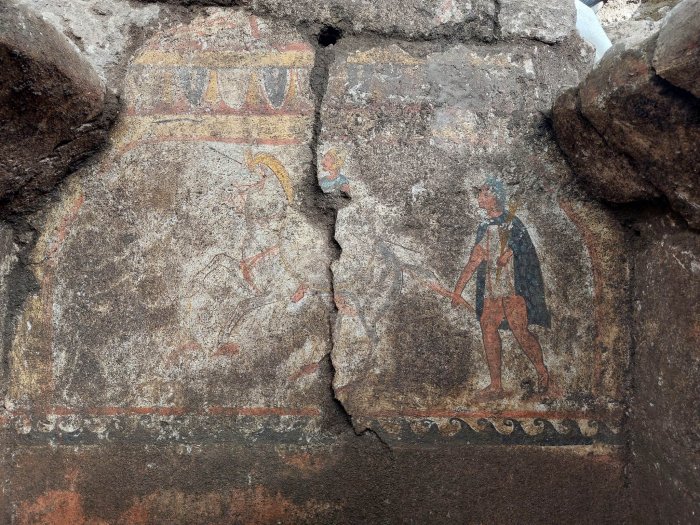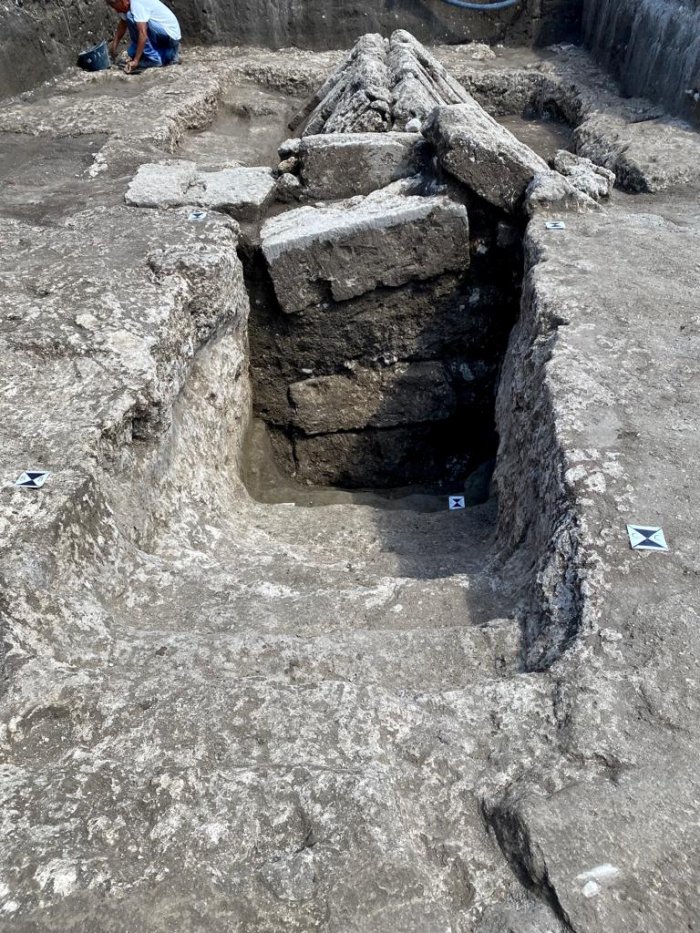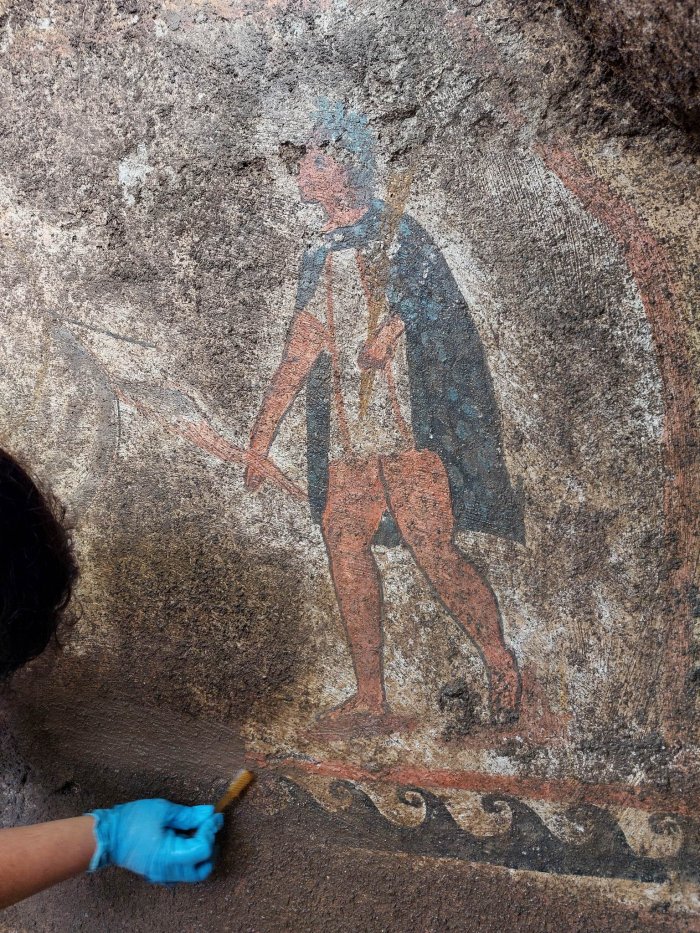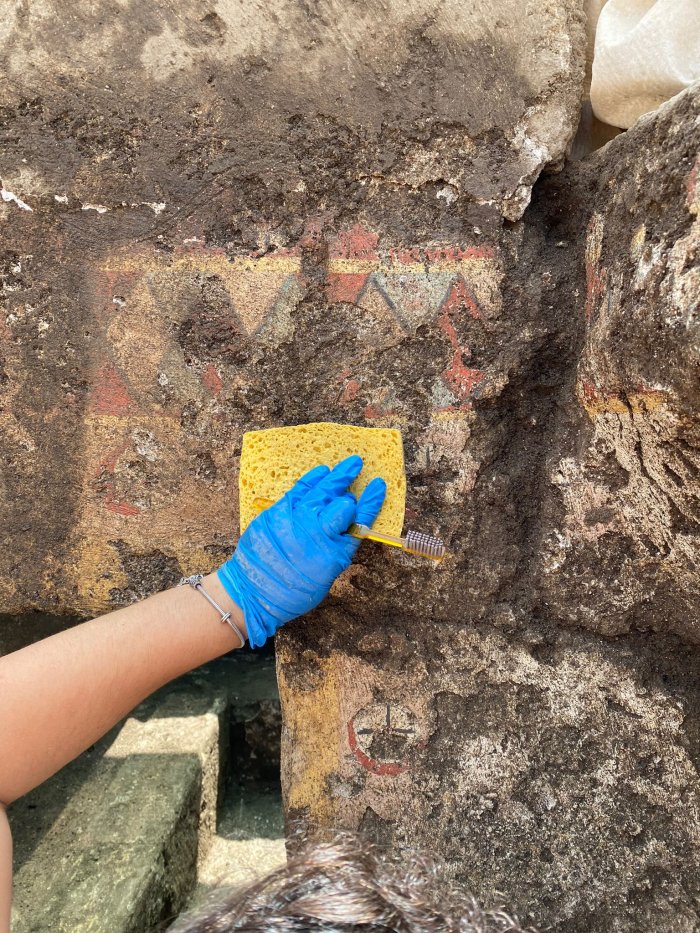Jan Bartek – AncientPages.com – The vast necropolis of Pontecagnano in the province of Salerno, Italy, contains almost 10,000 burials dating from 3000 B.C. to the third century C.E. The excavation of the necropolis started by Bruno D’Agostino in 1962 and continues until today. Many of the tombs are still unexplored. Those examined provide a clear image of the funerary customs of the time, with substantial differences attributable to the social status, gender, and age class of the deceased.

Credit: Superintendency of Archeology, Fine Arts and Landscape of Salerno and Avellino

Credit: Superintendency of Archeology, Fine Arts and Landscape of Salerno and Avellino
Few painted tombs have been found, and these burials are highly significant as they give us unique images of the past.
Designated T. 10043, the painted chamber found at the Pontecagnano necropolis is extraordinary. The frescoed burial chamber is only one of four tombs of this kind discovered at the cemetery.
According to the Superintendency of Archaeology, Fine Arts and Landscape of Salerno and Avellino, the unearthed pained tomb dating to the end of the 4th century B.C. is of “considerable importance.”
“The tomb structure is built of travertine blocks with a double-pitched roof. The entrance to the burial chamber is characterized by a steep staircase carved into the travertine. The back wall is adorned with an illustration depicting the return of a warrior, harmoniously set among various decorative elements.

Credit: Superintendency of Archeology, Fine Arts and Landscape of Salerno and Avellino

Credit: Superintendency of Archeology, Fine Arts and Landscape of Salerno and Avellino
Festoons and pomegranates adorn the side walls of the tomb. Surprisingly, the front door is also painted. The deceased buried inside was not accompanied by any funerary object but wore a precious gold leaf crown, of which some fragments still remain,” the Estruscan Times reports.
See also: More Archaeology News
The town of Pontecagnano Faiano is located a little more than 70 kilometers from Naples. The area was inhabited as far back as early as the Copper Age (3500-2300 B.C.). Later, the region was settled by the Villanovan Culture, the earliest Iron Age culture of Italy, and the predecessor to the Etruscans.
The exhibition at the National Archaeological Museum “The Etruscans of the Frontier” in Pontecagnano, displays many fascinating archaeological finds from the necropolis.
Written by Jan Bartek – AncientPages.com Staff Writer





